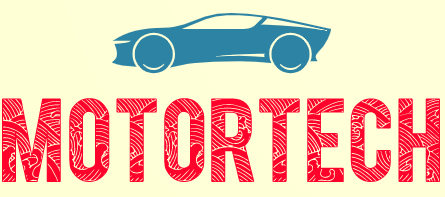
Vehicles of all shapes and types act differently on various surfaces depending on type of Drivetrain they feature whether front-wheel drive, rear-wheel drive, four-wheel drive, or all-wheel drive. You might know which drive system your vehicle has, but here we’ll explain a little bit more about how each of these drive systems work.
Front-Wheel Drive (FWD):

FWD means that the power from the engine is delivered to the front wheels of your vehicle. With FWD, the front wheels are pulling the car and The rear wheels don’t receive any power on their own.
Front-wheel drive is often employed because it is a compact system that frees up space inside the cabin. Plus, the majority of the weight is positioned over the front wheels, offering good traction when its slippery.
Pros :
- The first is economy.FWD helps cut down the car’s weight by eliminating the need of separate transmission.This, in turn helps the car get better gas mileage.
- It is cheaper to design and build a FWD car.
- There are fewer parts — and the drivetrain is easier and cheaper to install.
- This is is most commonly found in economy-type and lower-cost cars.
Cons :
- FWD cars are nose-heavy, which isn’t optimal for handling — especially high-speed, high-load handling.
- Also a problem is that the front wheels have to do two things at once — put the power to the ground and steer the car. This, too, is not optimal for a performance/sporty car. In a high-powered FWD car, it can sometimes be difficult to keep the car pointed straight ahead as the car accelerates. The front wheels may jerk to the left or right — a problem called “torque steer.”
- Modern FWD cars are less prone to this torque steer thanks to electronic traction control, but it’s still not the hot set-up for performance applications — which is why very few “serious” performance cars are FWD.
- The final thing to know about FWD is that it’s relatively fragile. Half-shafts and constant velocity (CV) joints are more susceptible to injury.
Rear Wheel Drive(RWD) :

Rear-wheel drive is a form of engine and transmission layout used in motor vehicles, where the engine drives the rear wheels only. Until the late 20th century, rear-wheel drive was the most common configuration for cars. Most rear-wheel drive vehicles feature a longitudinally mounted engine at the front of the car.
Pros :
- The RWD is both simple and rugged — especially if it’s a solid axle design — and can take a lot of abuse without needing expensive repairs.
- The RWD cars offer a better balance — and because of this, better handling.
- A RWD car spreads the weight of its drivetrain more evenly front-to-rear. This is why most sports cars — and virtually all race cars — are RWD.
Cons :
- RWD cars are at their weakest in poor weather — rain and snow.
- Even with modern traction control, a RWD car is more prone to loss of traction on slick roads.
All Wheel Drive(AWD) :

An all-wheel drive vehicle is one with a powertrain capable of providing power to all its wheels, whether full-time or on-demand.Generally, a AWD system operates as a RWD or FWD vehicle but all-wheel drive preemptively sends power to both the front and rear wheels on every launch to prevent slip and loss of traction.
Pros :
- The number one advantage of AWD is excellent traction — both on dry pavement and in poor weather.
- Some AWD systems are based on RWD layouts (examples include the Mercedes Benz E-Class) while others are built around FWD layouts (such as any new Subaru).
- AWD vehicles do an impressive job of balancing handling/driving dynamics with “go anywhere, anytime” bad weather capability.
Cons :
- AWD cars are bulky and can weigh several hundred pounds more than an otherwise identical RWD or FWD car.
- Also,added weight means the car will use more fuel — especially if the engine’s power has been increased to compensate for the added weight.
- The last downside with AWD is the cost. AWD, when offered as an option, usually adds significantly to the car’s sticker price.
- Also, because there are more components, there are more things that will need to be serviced — and which may eventually fail and hit you up with a big bill as the car gets older.
Four Wheel Drive(4WD) :

Four-wheel drive, also called 4×4 or 4WD, refers to a two-axled vehicle drivetrain capable of providing torque to all of its wheels simultaneously. It may be full-time or on-demand, and is typically linked via a transfer case providing an additional output drive shaft and, in many instances, additional gear ranges.
All-wheel drive is often confused with four-wheel drive but despite the fact both engage all four wheels, their are some key differences between the two.Most 4WD vehicles tend to operate in RWD mode until four-wheel traction is required. But unlike AWD, most systems are driver activated, meaning the driver must engage the AWD function via a secondary gear shift or through a button or setting.
Pros :
- The main benefits of 4WD are traction and power.
- Four-wheel drive systems present a great solution for driving through less-than-stellar terrain or conditions.
- Deep snow, muddy trails, and icy roads make for the perfect conditions to engage a four-wheel drive system
- Additional weight contributes to better grip on the road.
Cons :
- The main disadvantage of 4WD is added cost for purchase, maintenance, and fuel.
- Added weight improves traction and control, but it also increases the braking distance required to make a complete stop.
Related Posts :
Support this Website by Sharing this Blog
